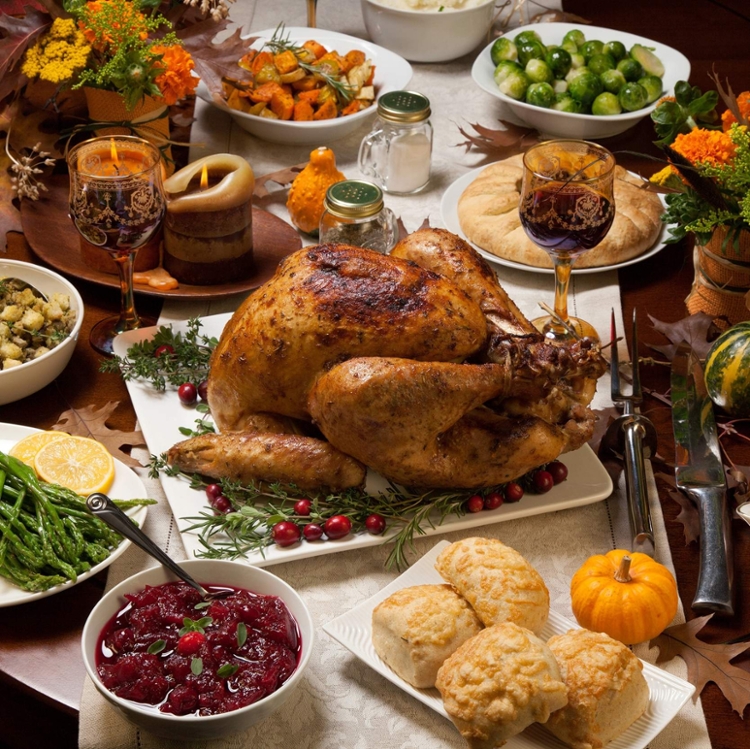
Stuff Your Turkey, Not Yourself This Thanksgiving Season
By: Arbre’ya Lewis | November 26, 2019 | Emory University, Office of Health Promotion

Check your calendars! The semester is winding to a close. The end of November is near and we all know what that means – Thanksgiving is upon us. As the weather gets cooler, the leaves start falling, and your professors release the rubrics for your final assignments – Thanksgiving break is a welcome respite. Many people experience the joys of going home and closing their textbooks and laptops for a few days with the promise of a filling homecooked meal. My family’s spread has everything from greens, beans, tomatoes, potatoes, yams, ham, turkey, you name it!
As a food centered celebration, Thanksgiving is a holiday unlike many others. Hoards of people prepare their plates with the intention of overeating. My mom used to warn me not to allow my eyes to be bigger than my stomach as I loaded my plate with every side dish I could fit on it. I found out later, that this was her education about eye hunger – a type of sensory hunger that has no bearing on your physical need or desire to eat.
Overeating happens often at Thanksgiving. Eating a large amount of food in a short time and not being able to control what or how much you are eating can lead to health problems and can develop into a diagnosable disorder if it becomes a habit.
After you overeat at your Thanksgiving meal, it is quite possible that you will feel sluggish. It can cause bloating, (think about how you need to loosen your pants after your meal), impede on your willingness to interact with your family and friends, and may even negatively impact the pleasure you experience when you eat your food. To mitigate your risk for developing any of these problems as a result of overeating during the holidays, there are informal mindful eating practices that could help you decide whether you should go back for that second helping of sweet potato casserole.
Here are a few tips and tricks for mindful eating:
- Chew slowly to enjoy the flavors and textures of your food
- Put down your utensil between bites so you don’t unintentionally rush your bites
- Choose the smaller plate to help with portion control
Mindful eating does not mean you cannot enjoy the foods that fill your holiday table. In fact, it can make your eating experience more enjoyable. In addition to sensory hunger, physical hunger, and emotional hunger are the other categories that can trigger the desire to eat. If you eat when you experience physical hunger, you will have actual satisfaction from your food.

As you approach the Thanksgiving buffet this holiday season, try eating intuitively. Eat when you are physically hungry and stop just before you feel completely full. Your body will take some time to communicate with your brain that you are full. Eat slowly to avoid eating beyond your satiety and subsequently feeling like you are bursting at the seams. You should also eat a breakfast on Thanksgiving Day full of healthy nutrients to help fight off cravings before dinner that can perpetuate overeating. Of course, you should fix a second plate, but think about taking it to go instead of overstuffing yourself with stuffing.